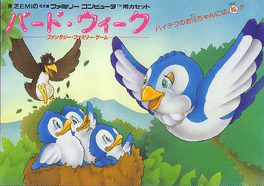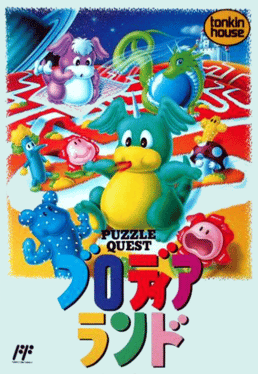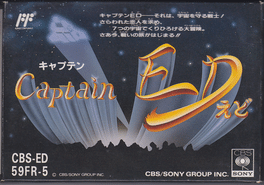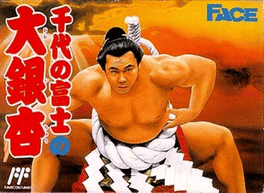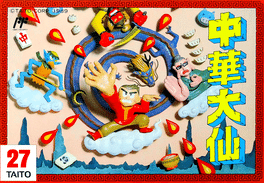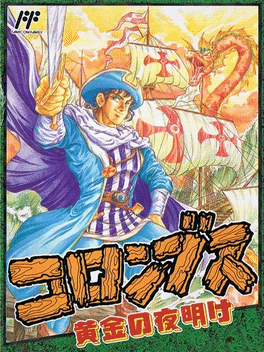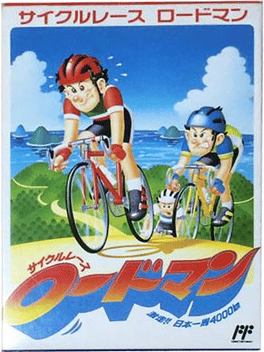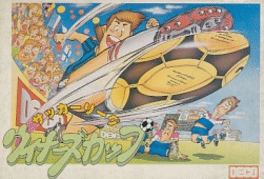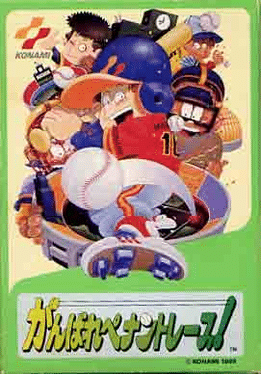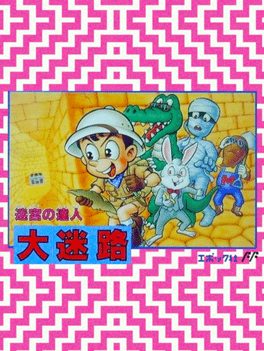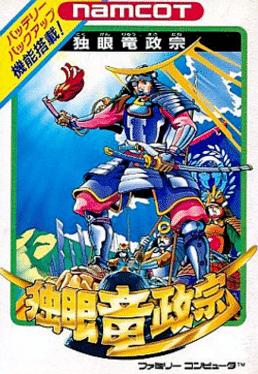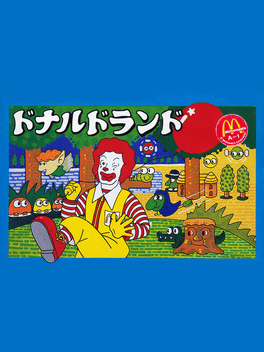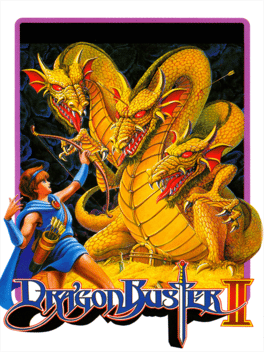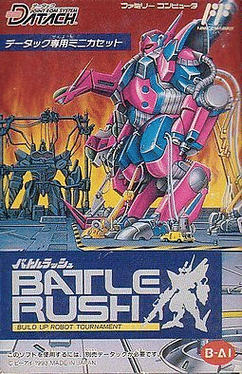Most Popular Family Computer Games - Page 38
-
Bird Week
1986
Bird Week
1986
The player plays as a bird and can either play the normal game or the single level practice game. The player must feed butterflies to the baby birds so that they can grow big and eventually leave the nest. It is suggested that they eventually become the "new mother birds" that take care of their offspring in the subsequent levels. Finishing all 999 levels of Bird Week actually results in the beginning of an endless loop instead that ends when the players loses all of his lives. Each level represents a season in the ecosystem of a bird. The game starts out in early spring. As the virtual year progresses, the season evolves into summer and eventually into autumn. After autumn, the game repeats itself by portraying the following spring. If the proper amount of butterflies are not fed to the babies, then the babies end up starving to death. The player will automatically lose a life if any of the baby birds die. In addition to this, the player also loses a life when a predator catches the player trying to deliver butte -
Blodia Land
1990
Blodia Land
1990
Blodia Land is a Puzzle game, developed by TOSE and published by Tonkin House, which was released in Japan in 1990. -
Bloody Warriors: Shan-Go Troop Strikes Back!
1990
You are a young man from an ancient village, which suffers from attacks by a vicious monster. You are assigned to find the monster's lair and to defeat it. However, upon your return to the village you find out some people were abducted by the imperial troops. Now you have to find out the Empries's true motives and to solve a grand mystery. -
Captain Ed
1989
Captain Ed
1989
Captain Ed is an Action game, developed by Graphic Research and published by CBS Sony Group, which was released in Japan in 1989. -
Chiisana Obake: Acchi Socchi Kocchi
1993
Chiisana Obake: Acchi Socchi Kocchi is a Puzzle game, developed by Atlus and published by Vap, which was released in Japan in 1992. -
Chiyonofuji no Ooichou
1991
The player is able to customize their own sumo wrestler by giving him a unique appearance. Characters have a chibi appearance to them. Items that can be added include are the eyes, ears, mouth, and nose. Once the customized wrestler is created, he must fight against other sumo wrestlers for the title of Yokozuna. There are two bars for each player that allow the player to fend off and deliver attacks. A tutorial mode is added that allows players to practice their moves against an AI opponent that is lower in intellect that the actual game's AI. -
Chuuka Taisen
1989
Chuuka Taisen
1989
The player controls Mike Chen floating on a cloud, maneuvering around the screen and shooting balls of energy at flying enemies. Powerups can be collected for stronger and faster firepower. Some parts of the game stage have doors that give the player the opportunity to buy special bomb types with collectible credits. Each stage has its own mini-boss and big boss. Throughout the stages, the player restarts at certain checkpoints after losing a life. -
Columbus: Ougon no Yoake
1992
A nautical strategic RPG hybrid action in the vein of Uncharted Waters. You follow the life of Christopher Columbus as he goes from rookie captain to his landing in America. After a few tutorial missions, you get turned loose on an open world to build fame for yourself by doing quests, slaying rare monsters holed up in dungeon areas, etc., until a King of a prominent country can be convinced to support your expedition to the New World. -
Crayon Shin-Chan: Ora to Poi Poi
1993
The game is a simple card game with a Tetris element. The layout is similar to a Tennis court with both players on either sides defending their goal, while stacks of cards are positioned in the center. Players must move Shin up and down sliding cards, in two's, to the center pile matching up symbols and push each stack back to the opponent's side in an attempt to over take their goal. -
Cycle Race: Road Man
1989
Cycle Race: Road Man
1989
It is the player's ultimate objective to make it all the way around Japan. If the player ends up completely damaging the bicycle, running out of energy, or falling behind a certain ranking, then he or she will automatically lose the race. Players can choose a representative from either Team USA, Team Japan, Team France, or Team Italy. As long as the player has at least one spare bicycle in the inventory, games will never end on a completely damaged bicycle. Passwords are used to save the game. The race is 4,000 kilometers long (2485.5 miles). Players must traverse the countryside that separates major Japanese cities along the coastline during the course of these 4,000 kilometres. Interesting scenery includes forests and cattle farms. Players are always given the exact altitude of each section; they are also shown how far in a stage the player has to advance in order to reach the finish line. -
Soccer League: Winner's Cup
1988
Soccer League - Winner's Cup is a soccer game developed by SAS Sakata for the Famicom, and published by Data East in 1988. During game play, field scrolls horizontally across the screen. Players select one of eight international teams and attempt to win the World Cup. The teams that the player can select include: Japan, Germany, Brazil, France, South Korea, England, Argentina, and the USA. Players may choose to play solo against the computer, or compete head to head with another player. Although the game was never released outside of Japan, most of the options are written in English. -
Ganbare Pennant Race!
1989
The ultimate showdown in baseball! Take to the field and batter up, and direct your team to Pennant glory. This is Konami's greatest sports event! Become the worlds greatest! -
Dai Meiro: Meikyuu no Tatsujin
1990
Dai Meiro: Meikyu no Tatsujin is a grid-based dungeon crawler developed and published by Epoch. Unlike most dungeon crawlers Dai Meiro does not contain any enemies and is focused primarily on exploration. The game was released in Japan in 1990. -
Daiku no Gen-san 2: Akage no Dan no Gyakushuu
1993
Daiku no Gen-San 2: Akage no Dan no Gyakushuu is an Action game, developed by Micronics and published by Irem, which was released in Japan in 1993. -
Dokuganryu Masamune
1988
Dokuganryu Masamune
1988
Dokuganryu Masamune (独眼竜政宗?) is a historical simulation game developed and produced by Namco for the Famicom in 1988. It is the third such game to appear on the Famicom inside of a month, including Koei's Nobunaga's Ambition and HOT-B's Takeda Shingen. This game is based on the life of Date Masamune, who held power in Japan during the early Edo period. An outstanding tactician, he was made all the more iconinc for his missing eye, and Date was often called dokuganryu (独眼竜? one-eyed dragon). In the game, you play as the warring overlord, and your aim is the unification of 11 regions under one rule. While comparable to other historical simulations released around the same time, this game is a little simpler and features immediate battle scenes, a hexagonal map, and includes mini-games such as a gold mine search and horseback archery. The game keeps a light, almost humorous tone, providing updates in the game via the Namcot newspaper, which shows changes in conversation tone and the emotions of your o -
Donald Land
1988
Donald Land
1988
When the Gumon Family takes over McDonaldland and captures Ronald's friends including Grimace, Birdie, the Fry Guys, and others, it's up to the jolly clown himself to put an end to their vile machinations and eat hamburgers across numerous locales leading up to the final castle headquarters of the Gumon Family. -
Doraemon: Giga Zombie no Gyakushuu
1990
The second video game outing for the popular Japanese children's character is a Final Fantasy style role-playing game. The player takes the role of Doraemon the robot cat and leads him on an adventure through time to stop the evil Giga Zombie. -
Double Moon Densetsu
1992
Double Moon Densetsu
1992
Double Moon Densetsu is a 1992 role-playing video game for the Family Computer published by Masaya. It is based on an earlier play-by-mail RPG also titled Double Moon Densetsu, serialized in Marukatsu Famicom and eventually Marukatsu Super Famicom; in addition to this computer game, there was also a tabletop RPG system produced based on the work. A deity named Fatima created a world with two different continents; that divided the world of sorcery from the world of swordsmanship. An evil demon plans to destroy this world by bringing forth a dark dragon from a demonic dimension. -
Dragon Buster II: Yami no Fuuin
1989
Centuries ago, Dragons and Demons roamed the country and brought terror into the lives of all people. However, a local legend states that the Sword of Thruth can restore peace to the land. It turns out that the almighty weapon is kept by the most ferocious dragon who ever lived but this doesn't stop the young Carl from willing to take on the challenge. He is small but the best archer the land has ever seen! -
Battle Rush: Build Up Robot Tournament
1993
The player has to build his own combat robot to use in a fighting tournament. These robots are built in factories that assign the robot a name in addition to installing its head, body, shoulder, and feet. The player has a pre-game lobby to get ready for the robot combat action. All matches have rounds of 60 seconds (unlike the 99-second round of most modern fighting video games). Both robots have a separate gauge for energy and damage. Standard punches and kicks can be thrown in addition to special moves (which look like ammunition).
